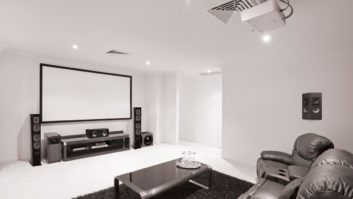CEDIA News Denver — Dolby Volume technology is making its way into audio components for the first time here at the CEDIA Expo, where Arcam and Harman/Kardon are showing the industry’s first A/V receivers (AVRs) embedded with the technology.
The technology is already available in Toshiba Regza TVs sold in Japan, and Dolby is working with silicon makers to design chipsets that would bring the technology to homes theater in a box systems, sound bars and 2.1 sound systems, said Craig Eggers, Dolby partner marketing senior manager. He declined to specify a timetable.
“With so many sources connected to an AVR, it really makes sense for Dolby Volume to be integrated into an AVR,” Eggers said. “The benefits are so obvious.”
In AVRs, a major benefit is maintaining a consistent volume level when consumers switch among connected audio and video sources. Harman/Kardon’s flagship $2,799-suggested AVR 7550HD, for example, applies the technology to such sources as an embedded Internet radio tuner, attached iPod dock, connected Blu-ray player and other video sources. Details of Arcam’s FMJ AVR600, marketed by American Audio Video of Plattsburgh, N.Y., were unavailable at press time.
Dolby Volume’s benefits also apply when channels are changed, a TV program transitions to a commercial, a TV program transitions from louder to softer scenes and when a broadcast source is switched from analog to digital. Users set a preferred reference level to enjoy a “consistent listening level across all sources and programs,” Eggers said. “You set it and forget it.”
Dolby Volume doesn’t simply adjust the gain of each audio channel, Eggers noted. “We apply independent correction to different frequencies and independently to different channels as needed in real time,” he said. Dolby Volume dynamically and automatically compensates for the human ear’s lower sensitivity to bass and treble sounds as volume levels decrease. The technology uses up to 40 bands of parametric equalization, with boosts or cuts up to 30dB, to ensure that low- and high-frequency sounds, particularly ambient background sounds, are audible when a program switches between louder and softer scenes.
“When the volume goes down, we restore all of the elements of the original mix for you to hear without adding artifacts. The perceptual balance is fully maintained,” Eggers said.
In another matter. Dolby said more than 50 AVRs and more than 29 Blu-ray players available in the United States support Dolby Digital Plus and/or Dolby TrueHD surround sound.








